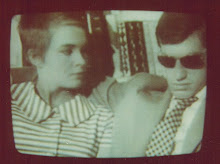Pacific Islanders in Communications produced this documentary directed by Emiko Omori. Shown on PBS, the anthology of stories exploring the transformative power of tattoo art to honor the past, explore the inner self and preserve culture. The film opens in 1999 with the first tattoo convention in Apia, Samoa where people gathered to celebrate the Polynesian art of tatau. As recent as the late 19th century only chiefs and their sons had tatau.
The skills have been passed down for two thousand years with the wisdom to "observe and ponder." The boar's tooth tool that was used since the beginning is still used today. The person receiving the tatau requires physical and spiritual assistance. The skin is bathed with cleansing sea water to begin the healing process. Imagery of nature, sea creatures, plants and daily life are incorporated into the art and becomes proof of one's worthiness to serve the community. An individual who is given tatau is able to conduct ceremonies, prepare food, give a speech. The tatau honors healthful living. The traditional tatau is considered the "regal cloth of Samoan spirit."
The art form moved throughout the islands to Aotearoa (New Zealand) with their version called Maori moku. Characterized by covering the entire face with design. Heads of Maori killed in war during the early 1800s were collected, a trend that caused the moku tradition for men to fade out by the 1960s. Women continued for another decade or so receiving the dark blue moku on their lips and patterns on the chin area of the face, a characteristic that was viewed quite desirable. The Maori mastery of carving stories into stone and wood is strongly connected to the moku patterning. Moku on hips and legs is tied to the art of movement with weaponry. Men frequently display a spiral pattern on the buttock. A trend to rekindle the lost artforms of moku has grown in New Zealand as women have found personal spiritual rebirth that ties them to their ancient culture and allows them to pass along to their grandchildren lost values about people and living together in community.
The culture of kakau was awakened during the 1970s Hawaii in the 1970s as young people renewed their connection to the culture that their grandparents broke away from. The kakau are not given without a person learning about their family heritage and native language. These patterns are placed over the entire body, asymmetrically. The patterning is larger and bolder than the tatau and moku, often inspired by feathers, weaves, growth, tool markings.
The first U.S. tattoo shop was opened in New York City in 1840 by a German immigrant. Tattoos flourished on the fringes of society, especially during wartimes. Sailors and soldiers commonly chose sailor girls, eagles, devils, hearts and names. A tattoo was often thought of as an identifying marker in case of death.
Today "the regal cloth of Polynesia has become a patchwork quilt." The ancient art of Samoa has entered the mainstream as dream symbols, family symbols and transformative imagery of all kinds become tattoo art. These guiding images give purpose and meaning on the life journey. I gained a new appreciation that almost makes me want one of my own.
9/25/10
Subscribe to:
Post Comments (Atom)





No comments:
Post a Comment